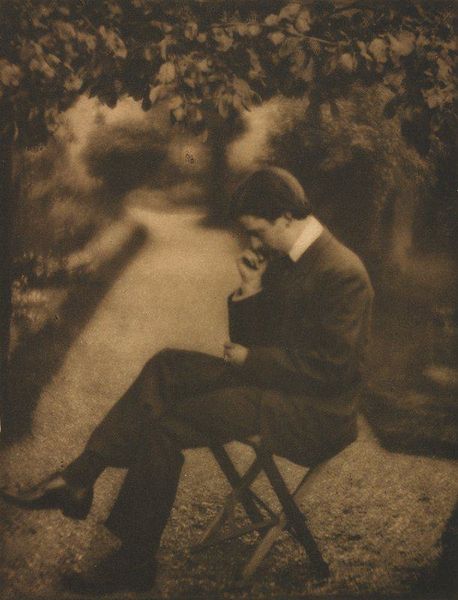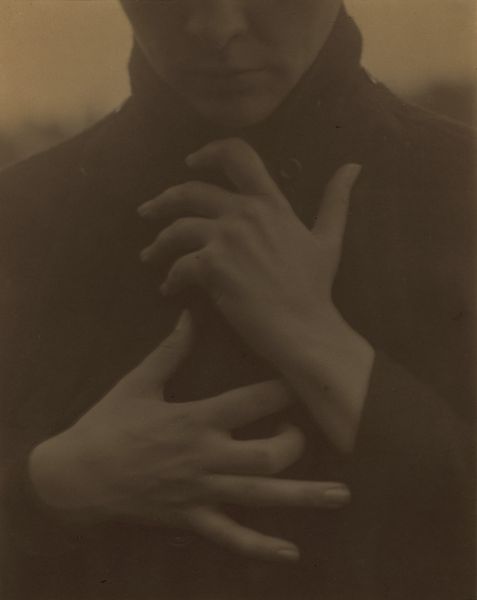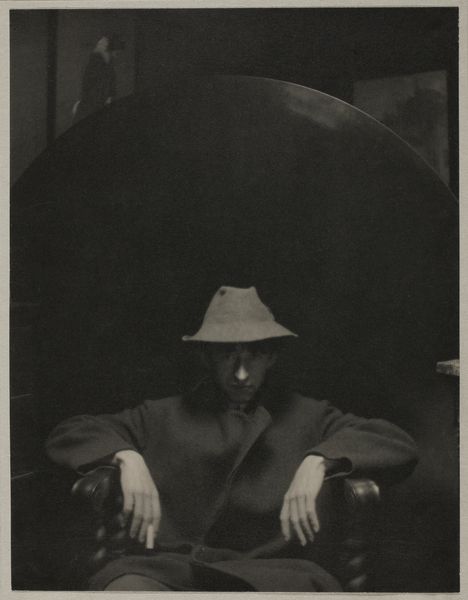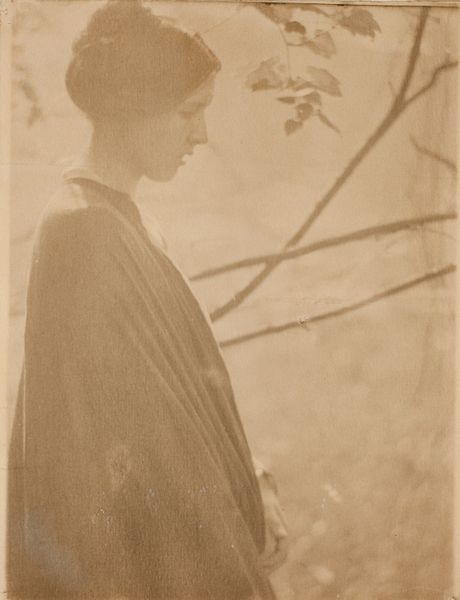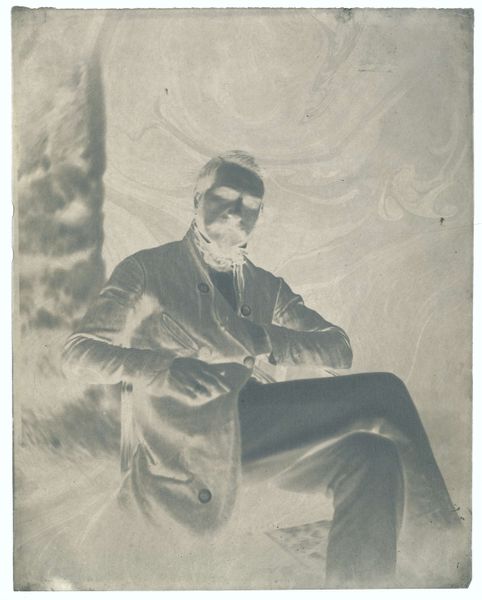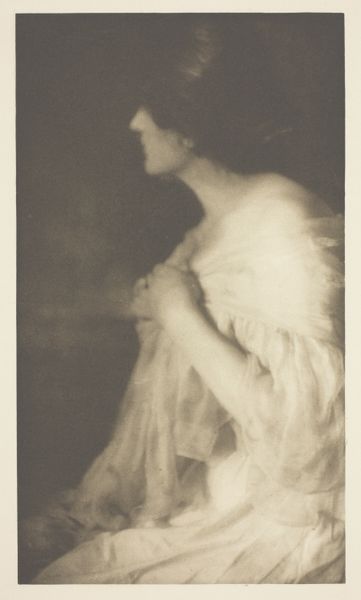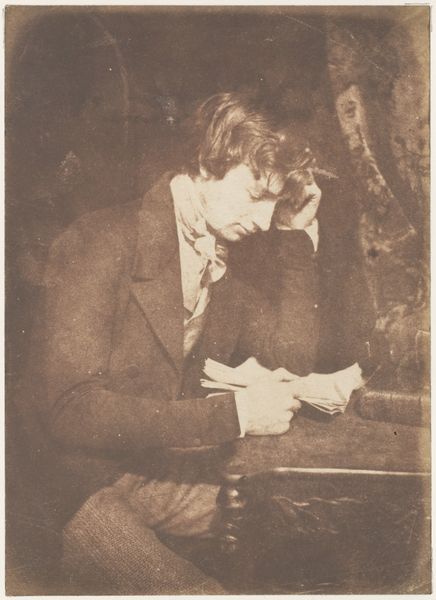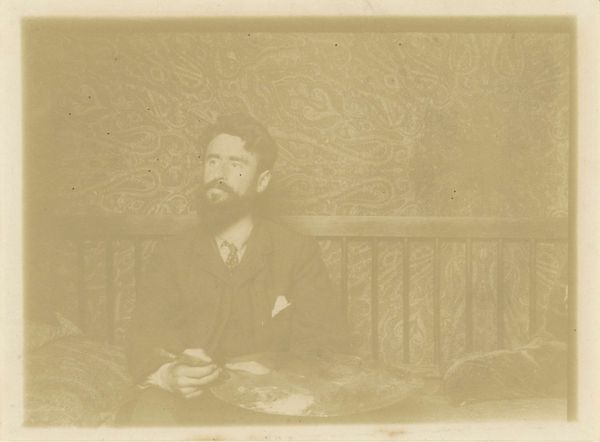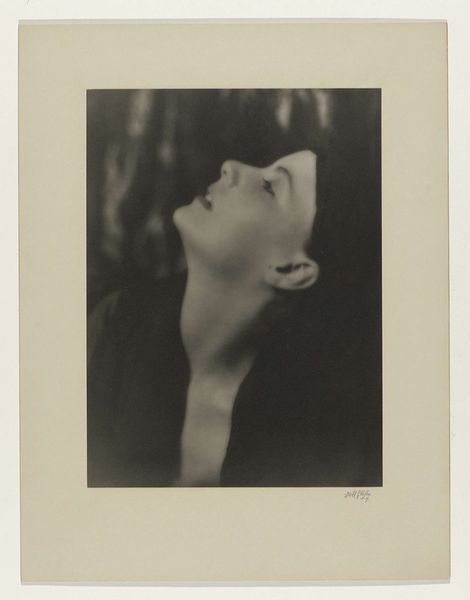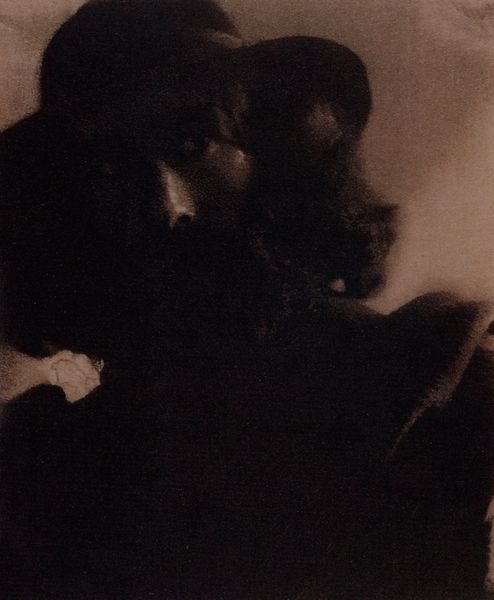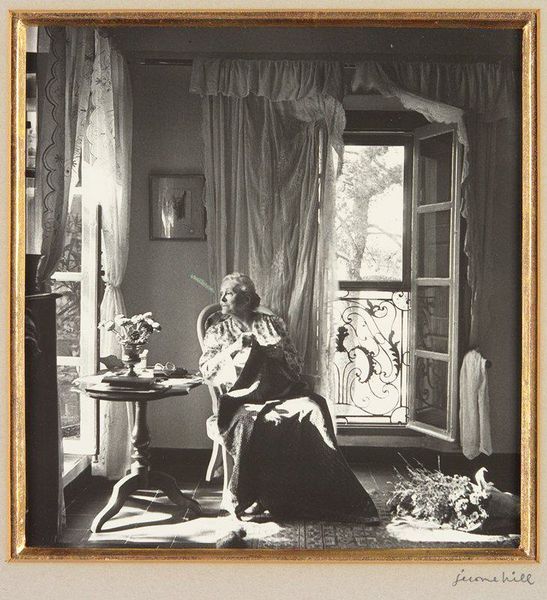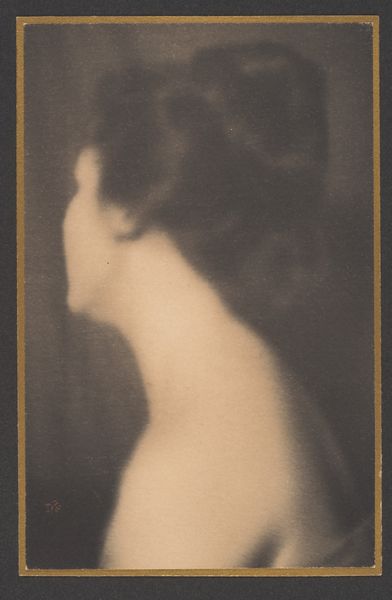
Dimensions: 8 3/8 x 6 3/8 in. (21.27 x 16.19 cm) (image)
Copyright: No Copyright - United States
Editor: This is George Bernard Shaw's photogravure, "Portrait of Alvin Langdon Coburn," from around the turn of the 20th century. It feels very intimate, almost like we're intruding on a private moment. What strikes you about this piece? Curator: What I see is an early twentieth-century effort to legitimize photography as high art. The pictorialist style, with its soft focus and atmospheric effects, mimics the painterly aesthetics that were deemed culturally superior at the time. Note the almost hazy quality achieved through the photogravure process. Editor: So, the goal was to elevate photography? To be taken seriously? Curator: Precisely. Institutions, critics, and the public, by and large, privileged painting. The Photo-Secession movement, of which both Shaw and Coburn were key figures, consciously strived to break down those hierarchical barriers by demonstrating photography’s artistic potential. Look at how the subject is framed: a solitary figure pensively posed outdoors. What does that suggest to you? Editor: I guess, a kind of artistic sensitivity, like he's a poet or something similar. Curator: Yes. And who photographs whom matters. Shaw, already a celebrated playwright, immortalizes Coburn, a significant figure in the photography world, solidifying his place in the artistic canon through this visual act of recognition and documentation. Do you think a casual snapshot would have the same impact? Editor: Definitely not. There is such intention behind it. I learned a lot about the dynamic between the photographer, his subject and the context in which the art was created! Curator: As did I. Considering photography through the lens of social dynamics truly enriches our understanding.
Comments
No comments
Be the first to comment and join the conversation on the ultimate creative platform.
